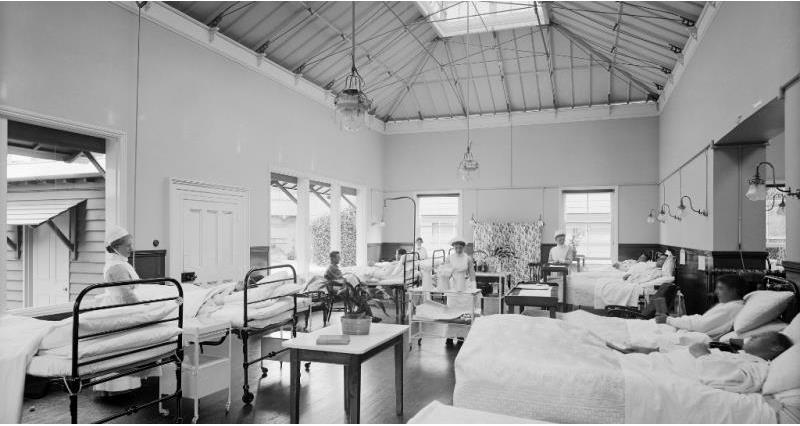The nation’s stately homes and estates played a major part in the war effort with many becoming military hospitals and camps for the duration.
They lost members of staff and in some cases their heirs, while their resources were often requisitioned to help the war effort.
Woburn, in Bedfordshire, was transformed into a military hospital, treating 2,453 soldiers over a five-and-a-half year period. Another house on the estate, Battlesden, became a holiday home for ‘war-worn nurses’ between 1916 and 1919, where a total of 224 nurses stayed for some respite.
Eighty-one of its employees went off to fight including gardeners, footmen, butlers, grooms, keepers, drivers, watchmen, porters and a ‘letter carrier’, while the Marquis of Tavistock – the 11th Duke of Bedford’s only son and heir – refused to enlist because he felt it wasn’t God’s will. He joined the YMCA instead.
The Duchess was a skilled radiologist and took charge of the X-ray room and also undertook some operations herself, while the Duke established the Bedfordshire Training Depot, at Ampthil, and was personally responsible for the 2,700 volunteers who signed up. Of those 2,235 completed their six months training and were transferred to the front, with 707 never to return at all.
Longleat, in Wiltshire, similarly became a relief hospital, caring for 2,044 patients between 1914 and 1919.
The estate’s assistant archivist and records manager Emma Challinor said the 5th Marquis of Bath was determined to keep things running as traditionally as possible.
Many of his employees went off to fight, while those left behind had to prepare and clear the house for its new use and continue to look after the estate.
Come the end of the war, Longleat faced many challenges and while a number of employees were welcomed back, John Alexander Thynne, 9th Viscount Weymouth and estate heir, was killed in action, in France, in 1916.
The war cost Longleat emotionally and financially. It was business as usual in the post-war years, but the family were forced to start selling off land to help cover the costs of the conflict and the rising cost of living.
This was the same story for many other country estates as the cost of war, death duties and the burden of income tax caused financial difficulties, leading some to sell off entire estates.
Some of the buyers were those who had previously been tenants who could now farm their own land for the first time.
More about the impact of World War One on farming:
Farming and the First World War homepage
Farming and the First World War: Wartime women
Farming and the First World War: Changes in democracy
Farming and the First World War: Mechanisation and the workhorses of war
Farming and the First World War: Food supply
Farming and the First World War: The humble pea
Farming and the First World War: The Women's Land Army
Farming and the First World War: The blind farmer
The Few That Fed The Many: Special publication on the role farming played during World War One?
